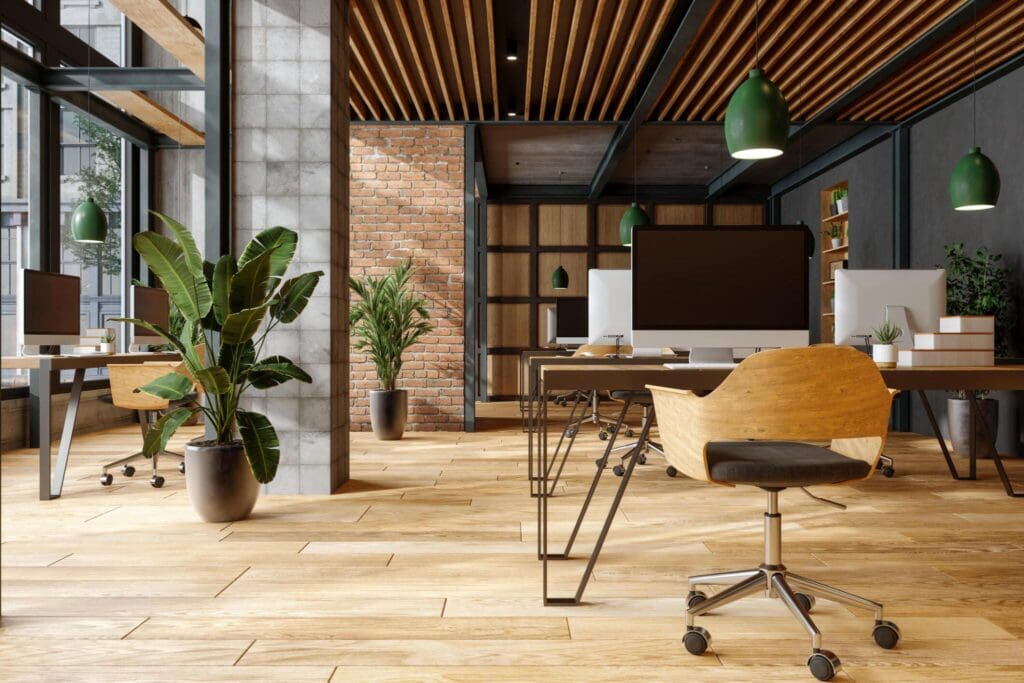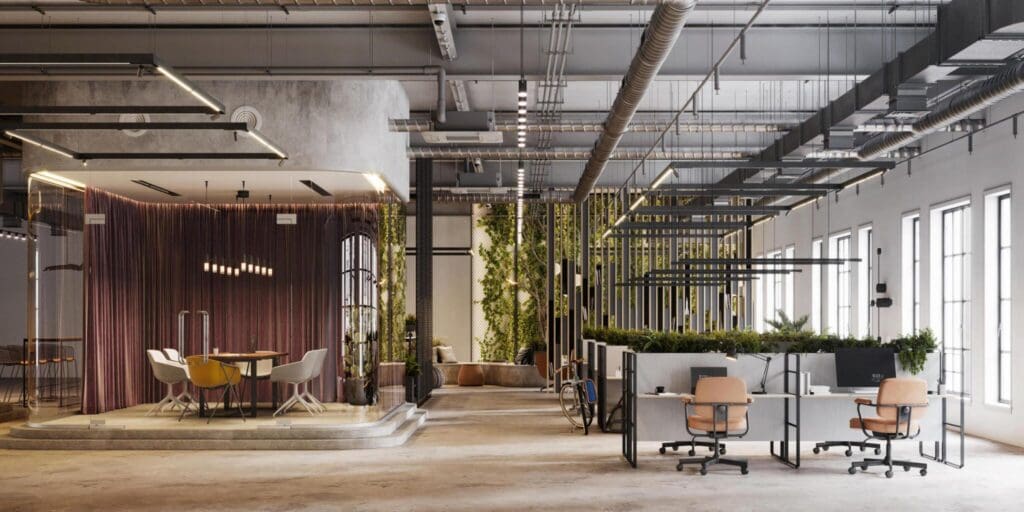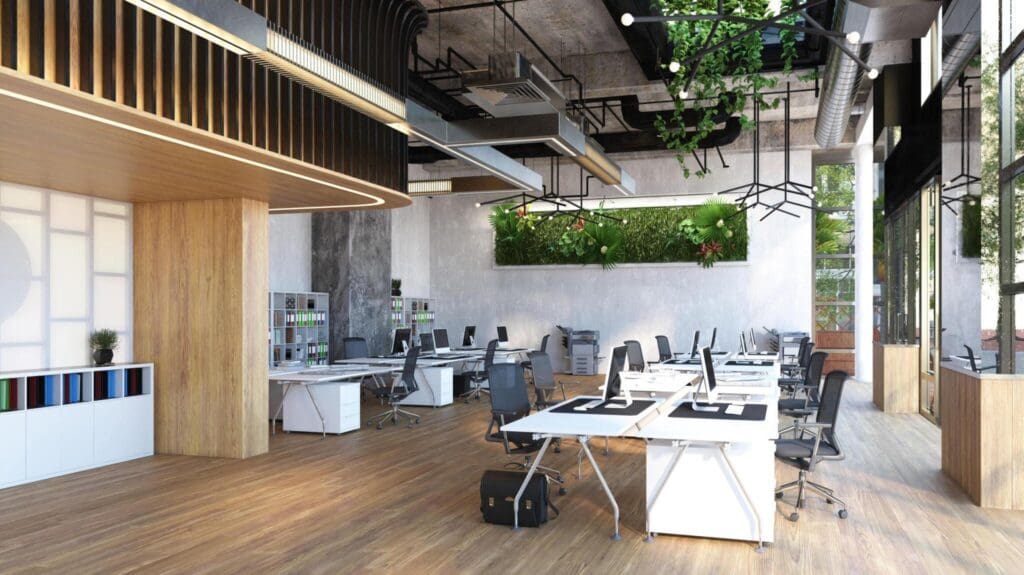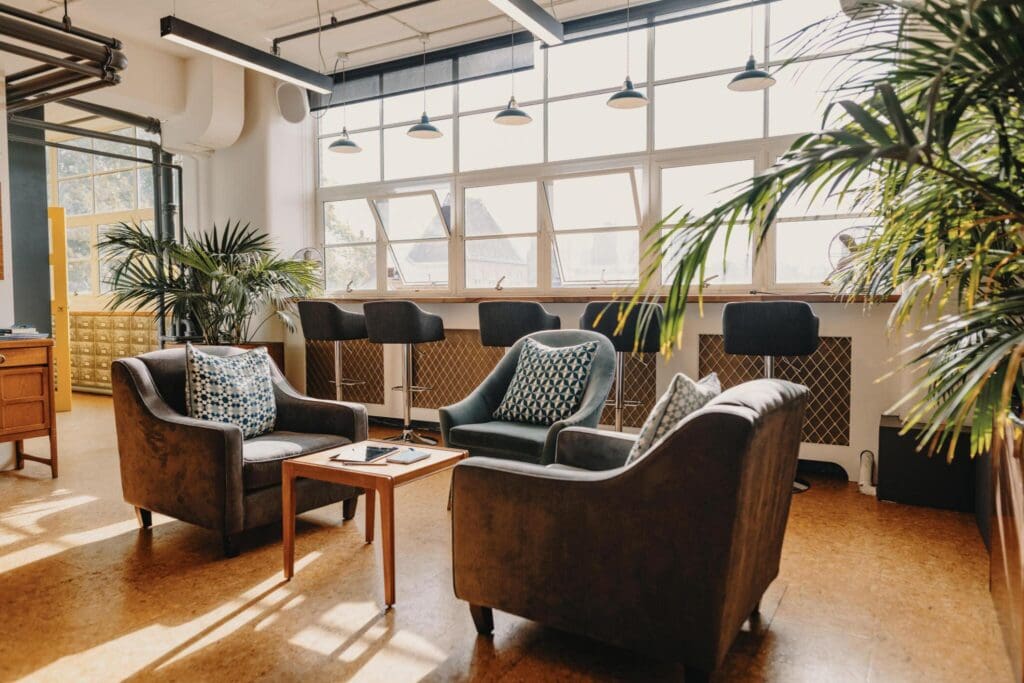How to Design an Inclusive Workspace With Contemporary Office Furniture


Organizations worldwide are recognizing the significance of designing work environments that not only accommodate but also celebrate diversity. The cornerstone of this transformation lies in the selection and integration of contemporary office furniture in White Plains, NY. If you want to get started, our comprehensive guide will empower you with the knowledge and insights needed to reenvision your workplace.
Table of Contents
Introduction
Key Takeaways
5 Factors to Consider in Inclusive Design
Assessing Your Workspace Needs
Selecting Contemporary Office Furniture
Frequently Asked Questions (FAQs)
Key Takeaways
✔ Inclusivity in workspace design is more than a trend; it’s a strategic approach that embraces diversity and promotes employee well-being and productivity.
✔ Contemporary office furniture plays a pivotal role in creating an inclusive workspace by addressing physical accessibility, cultural representation, and ergonomic comfort.
✔ Prioritize physical accessibility with features like height-adjustable desks, ergonomic chairs, wheelchair accessibility, and ergonomic accessories.
✔ Incorporating diverse cultural elements and designs in contemporary office furniture fosters a welcoming atmosphere and celebrates diversity.
✔ Choosing modular and adaptable contemporary office furniture ensures that your workspace can evolve to meet changing needs and preferences.
✔ Ergonomic furniture, including chairs, desks, and accessories, contributes to employee well-being by reducing physical strain and discomfort.
✔ Employee input and feedback are invaluable in shaping an inclusive workspace and selecting the right contemporary office furniture.
✔ For a reliable source of contemporary office furniture, consider Stamford Office Furniture in White Plains, NY, as your partner in transforming your workspace for inclusivity and productivity. |


5 Factors to Consider in Inclusive Design
Inclusive workspace design considers various factors that collectively contribute to a more welcoming and productive environment. Let’s delve into these critical aspects:
1. Physical Accessibility
Physical accessibility is the cornerstone of inclusive workspace design. It ensures that every employee, regardless of their physical abilities, can navigate and utilize the office space effectively. Here’s how it intersects with contemporary office furniture:
- Adjustable Desks and Chairs: Contemporary office furniture should include height-adjustable desks and chairs. This allows employees to customize their workstations for comfort and accommodates both seated and standing work.
- Accessible Storage: Incorporating accessible storage solutions ensures that employees can reach essential materials without assistance. This might include adjustable shelving or under-desk storage options.
- Wide Aisles and Pathways: Proper spacing between workstations and furniture ensures clear and unobstructed pathways. Wheelchair users and employees with mobility aids should have ample space to move around comfortably.
- Ergonomic Accessories: Inclusive design also extends to ergonomic accessories that can be added to contemporary office furniture. Examples include monitor arms and keyboard trays that can be adjusted to individual preferences.
2. Cultural and Social Considerations
Inclusivity isn’t limited to physical aspects alone. It extends to cultural and social dimensions, fostering an atmosphere where employees from diverse backgrounds can thrive. Consider the following aspects:
- Cultural Representation: Contemporary office furniture in White Plains, NY, can be a canvas for cultural representation. Opt for furniture pieces that incorporate diverse design elements, patterns, and materials from various cultures, reflecting the richness of your workforce.
- Spaces for Social Interaction: Designing communal spaces with contemporary office furniture that encourages interaction is crucial. These spaces should be welcoming, comfortable, and equipped with furniture that promotes spontaneous conversations and collaboration.
- Privacy and Focus Areas: Inclusivity acknowledges that employees have varying work styles and preferences. Provide private, quiet spaces equipped with inclusive furniture, ensuring that everyone can work comfortably, whether they prefer a bustling atmosphere or solitude.
- Cultural Celebrations: Consider dedicating spaces or using contemporary office furniture to celebrate cultural events and holidays important to your employees. This showcases your commitment to cultural inclusivity.


3. Ergonomics and Comfort
Inclusivity extends to the physical well-being of employees. Ergonomic considerations are paramount for creating a comfortable and accommodating workspace:
- Ergonomic Chairs: Ergonomically designed chairs should be a staple of contemporary office furniture. They provide support, reduce discomfort, and accommodate employees of various body types.
- Task Lighting: Adequate task lighting is vital for reducing eye strain and enhancing productivity. Contemporary office furniture should incorporate adjustable task lighting options, allowing employees to customize their lighting based on their needs.
- Monitor Arms and Keyboard Trays: Ergonomic accessories like monitor arms and keyboard trays contribute to a healthier workspace. These features can be seamlessly integrated into contemporary office furniture, enabling employees to position their equipment optimally.
- Height-Adjustable Desks: Contemporary office furniture should include height-adjustable desks. These desks empower employees to switch between sitting and standing, promoting better posture and reducing the risk of health issues related to prolonged sitting.
- Seating Diversity: Provide a variety of seating options within your contemporary office furniture selection. Some employees may prefer traditional chairs, while others may benefit from alternative seating, like ergonomic stools or balance ball chairs.
4. Flexibility and Adaptability
Flexibility and adaptability are key principles of inclusive workspace design. They ensure that the office environment can evolve to meet the changing needs of employees:
- Modular Furniture: Contemporary office furniture with modular designs allows for easy reconfiguration of workspaces. This flexibility enables teams to adapt their environment to different tasks and preferences.
- Convertible and Adaptable Pieces: Some employees may require specialized furniture for specific tasks or activities. Consider contemporary office furniture that can transform or serve multiple functions, catering to a wide range of needs.
- Customization Options: Inclusivity is about accommodating individual preferences. Contemporary office furniture that offers customization options, such as adjustable shelving or personalized desk setups, empowers employees to create their ideal workspace.
- Space for Movement: An inclusive workspace should encourage movement and posture changes. Incorporate sit-stand desks and communal areas within your contemporary office furniture layout, allowing employees to switch between tasks and positions.
- Access to Power and Connectivity: Ensure that contemporary office furniture integrates seamlessly with technology needs. Access to power outlets and charging stations should be readily available, promoting connectivity and device accessibility for all employees.
5. Furniture for Communal Spaces
Inclusive workspace design extends beyond individual workstations. Communal areas should also be welcoming, accommodating, and equipped with contemporary office furniture that fosters collaboration and relaxation:
- Lounge Areas: Design inviting lounge areas with comfortable seating options. Incorporate sofas, armchairs, and coffee tables to create a relaxed ambiance where employees can take a break or engage in informal discussions.
- Meeting Rooms: Equip meeting rooms with versatile and adaptable contemporary office furniture. Modular tables and stackable chairs allow for easy reconfiguration based on the meeting’s purpose, ensuring inclusivity in various group settings.
- Collaborative Zones: Foster collaboration through dedicated zones equipped with furniture that promotes teamwork. Consider benching systems, collaborative tables, and writable surfaces, encouraging employees to brainstorm and work together.
- Well-being Spaces: Recognize the importance of employee well-being by dedicating spaces for relaxation. Install comfortable lounge chairs, hammocks, or even massage chairs in designated areas to promote stress relief and rejuvenation.
- Flexibility in Communal Areas: Just as workstations require adaptability, communal spaces benefit from flexible contemporary office furniture. Ensure that furniture can be rearranged easily to accommodate various group sizes and activities.
Assessing Your Workspace Needs
The success of creating an inclusive workspace with contemporary office furniture begins with a thorough assessment of your current environment and the specific needs of your workforce.
Conducting a Workspace Audit
Before embarking on a transformation journey with contemporary office furniture, it’s crucial to gain a comprehensive understanding of your existing workspace. This assessment allows you to identify areas that require improvement and recognize the aspects that are already inclusive. Here’s how to conduct a workspace audit effectively:
- Furniture Inventory: Compile a list of all the furniture pieces present in your office. This includes desks, chairs, storage units, communal seating, and conference room furniture.
- Inclusivity Features: Examine each piece of furniture for inclusivity features. This could involve checking if desks are height-adjustable, chairs are ergonomic, and communal seating areas are welcoming and diverse.
- Layout Efficiency: Evaluate the arrangement of furniture in terms of space utilization and accessibility. Identify areas where furniture might obstruct pathways or hinder movement.
- Storage Accessibility: Assess the accessibility of storage units, especially for employees with mobility challenges. Ensure that all employees can easily reach essential materials and supplies.
Gathering Employee Feedback
The experiences and perspectives of your employees are invaluable in shaping inclusive workspace design. Here’s how to gather employee feedback effectively:
- Surveys and Questionnaires: Create surveys or questionnaires to solicit feedback from employees. Ask about their comfort, accessibility concerns, and preferences regarding contemporary office furniture.
- Focus Groups: Organize focus group discussions with a diverse representation of your workforce. Encourage open and honest conversations about their workspace experiences.
- Individual Interviews: Conduct one-on-one interviews with employees who may have specific needs or challenges related to the workspace. Listen to their unique perspectives and suggestions.
- Observations: Observe how employees interact with their workspace and furniture. Identify pain points, areas of frustration, or instances where inclusivity could be improved.
- Feedback Channels: Establish formal feedback channels within your organization, allowing employees to express their thoughts and concerns about the workspace and contemporary office furniture on an ongoing basis.
Identifying Specific Inclusivity Goals
Ensure that your workspace and contemporary office furniture cater to the diverse needs of your employees, including those with disabilities:
- Wheelchair Accessibility: Make sure that all pathways, workstations, and communal areas are wheelchair-accessible. Remove obstacles and provide ramps or elevators where necessary.
- Accessible Desks and Chairs: Invest in height-adjustable desks and ergonomic chairs that can be easily adapted to accommodate different abilities and comfort preferences.
- Assistive Technology Integration: Explore integrating assistive technology, such as screen readers or adaptive keyboards, to ensure digital accessibility for employees with disabilities.
- Visual and Auditory Accessibility: Consider the needs of employees with visual or auditory impairments. Provide braille signage, tactile cues, and sound-absorbing materials where needed.


Selecting Contemporary Office Furniture
The selection of contemporary office furniture from shops like Stamford Office Furniture is a pivotal aspect of inclusive workspace design. It’s not merely about aesthetics but about ensuring that the furniture you choose aligns with the principles of inclusivity, functionality, and adaptability.
Adjustable Desks and Chairs
Contemporary office furniture should prioritize adjustability, especially for desks and chairs:
- Height-Adjustable Desks: Standing desks, or desks with adjustable heights, are becoming increasingly popular. They cater to employees who prefer working while standing or need to alternate between sitting and standing to reduce physical strain.
- Ergonomic Chairs: Ergonomic chairs are designed to provide proper lumbar support, adjustable armrests, and seat height. They accommodate employees of various body types, ensuring comfort and minimizing the risk of musculoskeletal issues.
- Task Seating: Task chairs offer excellent support and comfort for desk-bound work. Choose contemporary office furniture task chairs that promote good posture and allow users to adjust their seating position easily.
- Active Seating: Consider incorporating active seating options like balance ball chairs or kneeling chairs into your contemporary office furniture collection. These alternatives encourage core engagement and movement while seated.
Monitor Arms and Keyboard Trays
Ergonomic accessories are vital components of an inclusive workspace. They enhance the comfort and productivity of employees:
- Monitor Arms: Adjustable monitor arms allow employees to position their screens at eye level, reducing neck strain. Contemporary office furniture that accommodates monitor arms ensures optimal ergonomics for computer users.
- Keyboard Trays: Keyboard trays can be attached to desks to provide an ergonomic typing position. When selecting contemporary office furniture, consider options that integrate keyboard trays seamlessly.
Task Lighting
Lighting plays a significant role in ergonomics and overall comfort. Contemporary office furniture should consider the following lighting aspects:
- Adjustable Task Lighting: Contemporary office furniture can incorporate task lighting with adjustable features. This allows employees to control the direction and intensity of their lighting, reducing eye strain and enhancing visibility.
- Natural Light Optimization: Position workstations and desks to maximize access to natural light. Consider furniture layouts that take advantage of windows and incorporate translucent materials to diffuse natural light throughout the workspace.
Material Selection for Sustainability and Inclusivity
The materials used in contemporary office furniture should align with sustainability and inclusivity principles:
- Sustainable and Eco-friendly Options: Prioritize contemporary office furniture made from sustainable materials such as responsibly sourced wood, recycled metal, or eco-friendly textiles. Sustainable furniture choices contribute to a healthier environment.
- Furniture for Various Sensory Needs: Inclusivity extends to individuals with sensory sensitivities. Select materials for contemporary office furniture that cater to sensory needs, such as acoustic fabrics that reduce sound reflection or textured surfaces that provide tactile feedback.
- Sensory-Friendly Finishes: Some employees may be sensitive to certain finishes or materials. To create a comfortable workspace for all, ensure that contemporary office furniture finishes are low-VOC (volatile organic compounds) and allergen-free.
Customization and Flexibility
Inclusivity is also about accommodating individual preferences and adapting to evolving needs. Contemporary office furniture should offer customization and flexibility:
- Modular Furniture: Modular furniture allows for the easy rearrangement of workspaces. Consider contemporary office furniture that includes modular elements, such as desks, storage units, and partitions. This flexibility enables teams to reconfigure their space to meet changing requirements.
- Convertible and Adaptable Pieces: Furniture that transforms or serves multiple functions can cater to diverse needs. For example, tables that can convert from conference-style to collaborative workstations provide adaptability within the workspace.
- Furniture for Communal Spaces: In communal areas, contemporary office furniture should be designed to encourage social interaction and collaboration. Select pieces that can be rearranged or combined to accommodate different group sizes and activities.
- Customization Options: Allow employees to personalize their workspace with contemporary office furniture customization options. Adjustable shelving, monitor mounts, and sit-stand desk features empower individuals to create an environment that suits their work style and preferences.
- Space for Movement: An inclusive workspace should encourage movement and posture changes. Incorporate contemporary office furniture like sit-stand desks, height-adjustable tables, and communal spaces within the office layout, facilitating dynamic work settings.


Frequently Asked Questions (FAQs)
What is the significance of contemporary office furniture in creating an inclusive workspace?
Contemporary office furniture plays a pivotal role in shaping the inclusivity of a workspace. It contributes to physical comfort, personalization, representation of diversity, collaboration, and ergonomic support, all of which are essential components of inclusivity.
How can contemporary office furniture promote physical accessibility in the workspace?
Contemporary office furniture that prioritizes physical accessibility includes features like adjustable desks and chairs, wheelchair-accessible pathways, and ergonomic accessories such as monitor arms and keyboard trays. These features ensure that employees with diverse physical abilities can work comfortably and productively.
What role does cultural representation play in selecting contemporary office furniture?
Cultural representation in contemporary office furniture fosters a welcoming and inclusive atmosphere. It celebrates diversity and allows employees from various backgrounds to feel valued and respected. Furniture choices can incorporate design elements, materials, and aesthetics that resonate with different cultures.
How can contemporary office furniture be customized to cater to individual preferences?
Customization of contemporary office furniture can include adjustable shelving, personalized desk setups, and modular designs that allow employees to adapt their workspaces. This customization empowers employees to create a workspace that aligns with their preferences and work styles.
How can the layout and arrangement of contemporary office furniture contribute to inclusivity?
The layout and arrangement of contemporary office furniture impact inclusivity by ensuring clear pathways, universal design principles, accessibility, zoning for different tasks, and providing a balance between open and closed floor plans. A well-designed layout considers the needs of all employees.
Transform Your Workspace for Inclusivity
As you embark on this transformative endeavor, we recommend partnering with a trusted and experienced provider of contemporary office furniture. That’s where Stamford Office Furniture comes into play. Don’t miss the opportunity to revamp your workspace with the latest in contemporary office furniture. Contact us today and take the first step towards a workspace that fosters inclusivity, productivity, and employee well-being.





































